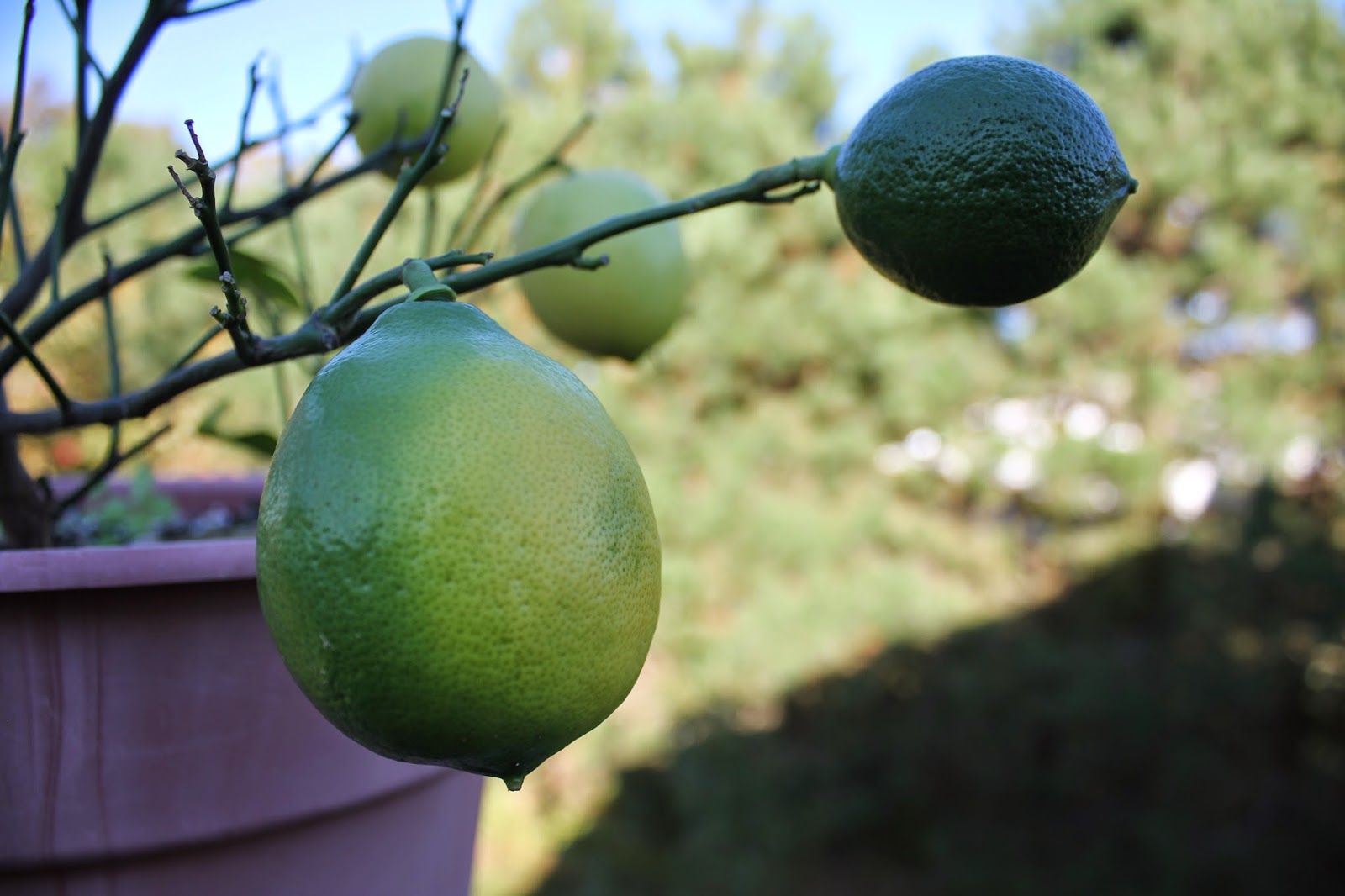I'm surprised it's not buckling under their weight!
Last year, I ordered a lemon plant through mail-order, and before it arrived I saw some at Home Depot, and couldn't resist. So there are actually two plants combined in this pot. One has 2 fruit, and the other has 4.
The flowers of the lemon trees were amazingly pure white and very fragrant. And the fruit is such a bonus. I'm reluctant to pick and try them, because they have been such a long time coming.
 |
| turning from green to yellow - almost ripe |
 |
| A few weeks later, I've been enjoying the lemons, and there are just three left. |
here is some info from Wickapedia:
Citrus × meyeri, the Meyer lemon, is a citrus fruit native to China thought to be a cross between a true lemon and either a mandarin or common orange. It was introduced to the United States in 1908 by the agricultural explorer Frank Nicholas Meyer, an employee of the US Department of Agriculture who collected a sample of the plant on a trip to China.
Citrus × meyeri trees are 2 to 3 m tall at maturity, though they can be pruned smaller. Their leaves are dark green and shiny. The flowers are white with a purple base and fragrant.
The Meyer lemon fruit is yellow and rounder than a true lemon. The skin is fragrant, thin, and deep yellow with a slight orange tint when ripe. Meyer lemon fruits are sweeter, and less acidic than the more common Lisbon or Eureka supermarket lemon varieties. The pulp is a dark yellow and contains up to 10 seeds per fruit.

No comments:
Post a Comment
I love hearing from other bloggers!